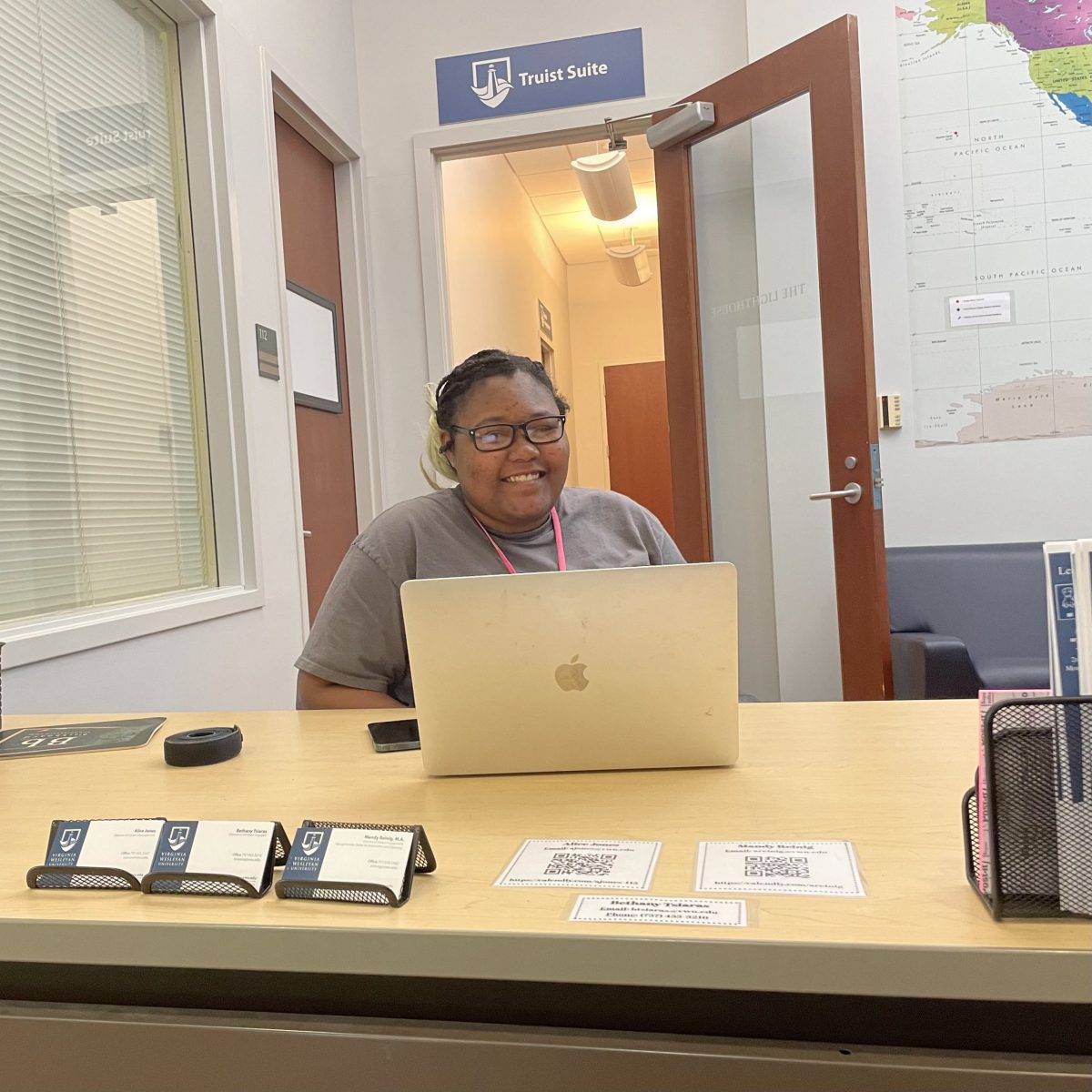Featured Image: Sophomore Sharmonika Brandon works as an assistant at Wesleyan Engaged. Lily Reslink | Marlin Chronicle
Step 1: Research which Work and Learn program works the best for you.
Virginia Wesleyan’s Work and Learn Program has five components to help earn money and pay off tuition.
The Federal Work-Study program is funded by the federal government, and students eligible for it can find it in their financial aid portal. The amount of money received is based on the information a student provides when they apply.
The Campus Cooperative program is similar to the federal work-study program, but the campus sees if the students need financial aid, and they can apply to positions that are in the campus cooperative. Depending on the job, a student can earn up to $3,000 a year in the form of a grant for tuition credit.
William Harrell, director of Recreation and Wellness, said that for a Co-Op position, students “are given a grant and they’re given a certain amount of money depending on what their job position is.”
The Professional Partnership Program is where students participate in internships out in the community, allowing them to get real-world experience while working off their tuition. They receive a $3,000 scholarship per year.
Jason Seward, associate vice president for Campus Life and Operational Management said, “They’re also gaining experience from working both on campus and then off campus with some of our partners.”
The Opus program is for students who still have a balance to help full-time staff complete projects to earn a grant. It is a more selective program. The scholarship is dependent on what the student needs.
The Residential Leaders program is made up of RA’s. These students will help create a community in their halls and will be student leaders. Students can apply to this program in the spring and will receive $4,200 a year in the form of a grant.
Step 2: Decide where on campus you want to work.
There are many places on campus where students can work. Almost every place on campus has a student working position. The most common place on campus to work is the Batten Student Center.
At the Batten Center, you can work as a lifeguard, plaza desk worker, supervisor, rock wall belayer, fitness room attendee, UREC staff or intramural staff.
Other places to work on campus include Student Activities, the Hofheimer Library, Academic Affairs, Finance, Athletics, the University Store, the Lighthouse, the Learning Center, Goode Performing Arts Center, Malbon Technology Center and Offices for the President and Batten Honors College.
Seward said, “All the operational areas of the institution are supported in some way shape, or form through student employment.”

Steps to get a job features senior Sydney Murray working at the
Postal and Duplication Office.
Step 3: Find a position that would work for you.
There are a multitude of job options available for students. Look into the requirements for the different jobs around the place where you would like to work. Each job is looking for different qualities that may align with the student’s skill set the best. If that position does not end up working, there are many options and choices that may be better.
Junior Britni Arrington, works as an assistant to the Student Activities department.
“What I like about this job as opposed to other jobs I’ve had on campus is that my tasks are very plainly set out for me. I understand what I need to do and know the expectation that is set for me,” Arrington said.
Step 4: Reach out to the supervisor of the place where you want to work.
Each place on campus handles its application process differently. Reaching out to the supervisor shows interest, and they can lead you to the application or set up an interview for the position.
The university will often send out emails and use social media to promote job opportunities.
Seward said, “Typically, what happens is when there’s availability, it’s communicated to the student body and then they simply just touch base with the supervisor for the area. And those are listed on the work and learn website on the college’s website.”
Step 5: Start working.
The final step is to start a new job. This opportunity allows you to meet new people and grow the skills needed for jobs in the future.
Students can work on paying off their tuition and grow as professionals, gaining resume-building experience. Students will learn time management, working as a team, and interacting with people professionally.
Seward said, “If anyone has a question about working on campus, feel free to connect with me, and I will guide them in the right direction.”
By MK Morris Larkin
mmorrislarkin@vwu.edu


